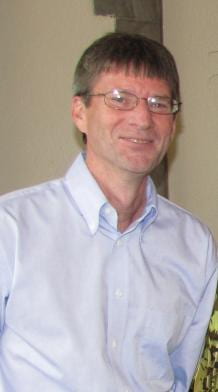Phillip Kunkler
Research Associate (Associate Professor)
2005-2006
Research Associate (Assistant Professor)
1999-2005
Research Associate (Instructor)
1997-1999
Dr. Kunkler completed his postdoctoral training at the University of Chicago in 1997. Dr. Kunkler later served as a Research Associate and Associate Professor at the University of Chicago until 2007. During that time, Dr. Kunkler’s research explored numerous topics using hippocampal slice cultures that provided insight into deciphering how increased susceptibility to spreading depression (SD), an in vitro model of migraine, occurs in brain. Dr. Kunkler and colleagues studied patterns of current sinks and sources occuring in hippocampus during SD using optical current source density techniques to measure changes. This analysis found that SD initiates a backpropagating current flow, similar to that of activity-dependent synaptic activation involved in neuroprotection. Along with current source density analysis, Dr. Kunkler and colleagues explored the magnitude, time course, and diversity of cytokine changes occurring with SD. Of particular note, early changes in TNF-α have proven to be important as a pro-inflammatory cytokine stimulus that increases SD susceptibility. How TNF-α and related cytokines modulate SD susceptibility continue to be a focus of research for the Kraig Lab.
Dr. Kunkler currently is a research technician in the Department of Biochemistry and Molecular Biology at Indiana University.
Publications
Kunkler PE, Kraig RP (1997) Reactive astrocytosis from excitotoxic injury in hippocampal organ culture parallels that seen in vivo. J Cereb Blood Flow Metab 17:26-43. PubMed
Kunkler PE, Kraig RP (1998) Calcium waves precede electrophysiological changes of spreading depression in hippocampal organ cultures. J Neurosci 18:3416-3425. PubMed
Hulse RE, Winterfield J, Kunkler PE, Kraig RP (2001) Astrocytic clasmatodendrosis in hippocampal organ culture. Glia 33:169-179. PubMed
Kunkler PE, Kraig RP (2003) Hippocampal spreading depression bilaterally activates the caudal trigeminal nucleus in rodents. Hippocampus 13:835-844. PubMed
Aptowicz CO, Kunkler PE, Kraig RP (2004) Homeostatic plasticity in hippocampal slice cultures involves changes in voltage-gated Na+ channel expression. Brain Res 98:155-163. PubMed
Hulse RE, Kunkler E, Fedynyshyn JP, Kraig RP (2004) Optimization of multiplexed bead-based cytokine immunoassays for rat serum and brain tissue. J Neurosci Methods 136:87-98. PubMed
Kunkler PE, Kraig RP (2004) P/Q Ca2+ channel blockade stops spreading depression and related pyramidal neuronal Ca2+ rise in hippocampal organ culture. Hippocampus 14:356-367. PubMed
Kunkler PE, Hulse RE, Kraig RP (2004) Multiplexed cytokine protein expression profiles from spreading depression in hippocampal organotypic cultures. J Cereb Blood Flow Metab 24:829-839. PubMed
Kunkler PE, Hulse RE, Schmitt MW, Nicholson C, Kraig RP (2005) Optical current source density analysis in hippocampal organotypic culture shows that spreading depression occurs with uniquely reversing currents. J Neurosci 3952-3961. PubMed
Lin W, Kunkler PE, Harding HP, Ron D, Kraig RP, Popko B (2008) Enhanced integrated stress response promotes myelinating oligodendrocyte survival in response to interferon-gamma. Am J Pathol 173:1508-1517. PubMed
Hulse RE, Swenson WG, Kunkler PE, White DM, Kraig RP (2008) Monomeric IgG is neuroprotective via enhancing microglial recycling endocytosis and TNF-alpha. J Neurosci 28:12199-12211. PubMed
Kraig RP, Mitchell HM, Christie-Pope B, Kunkler PE, White DM, Tang YP, Langan G (2010) TNF-alpha and Microglial Hormetic Involvement in Neurological Health & Migraine. Dose Response 18:389-413. PubMed

